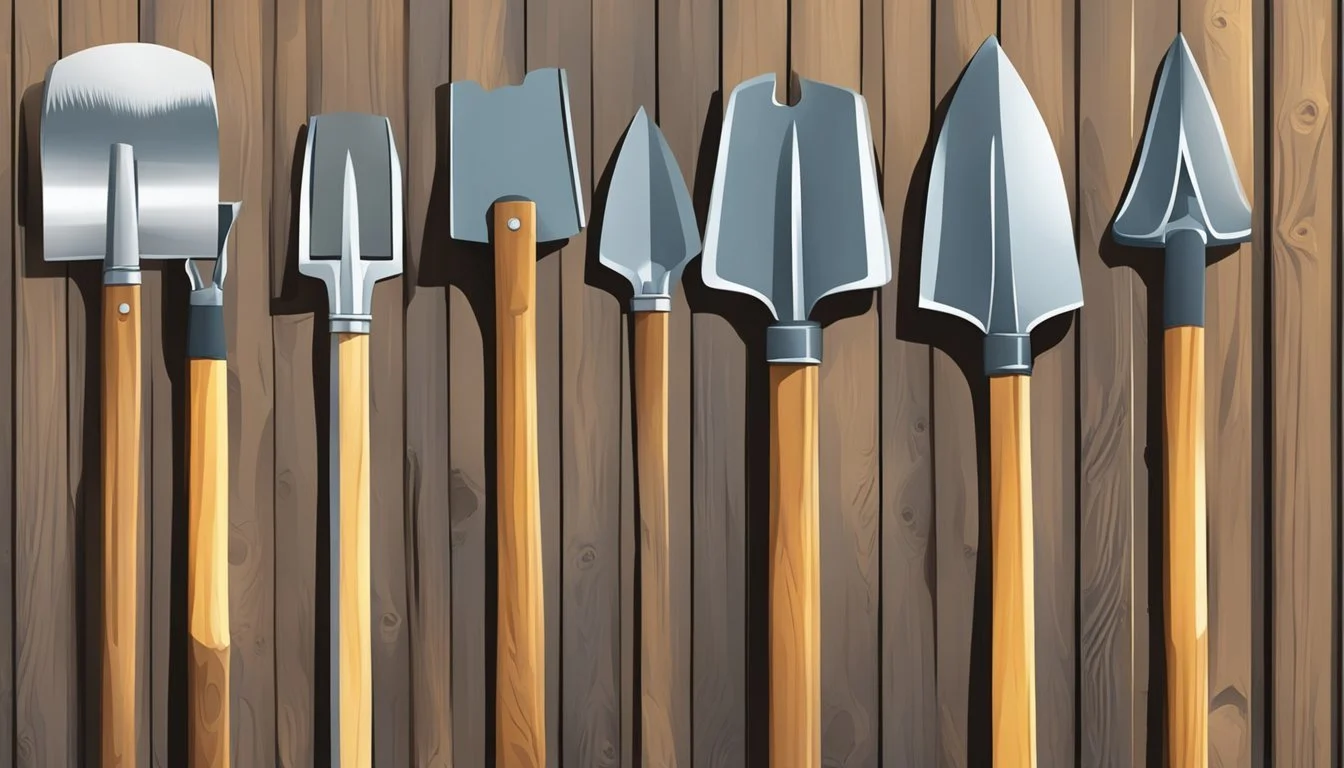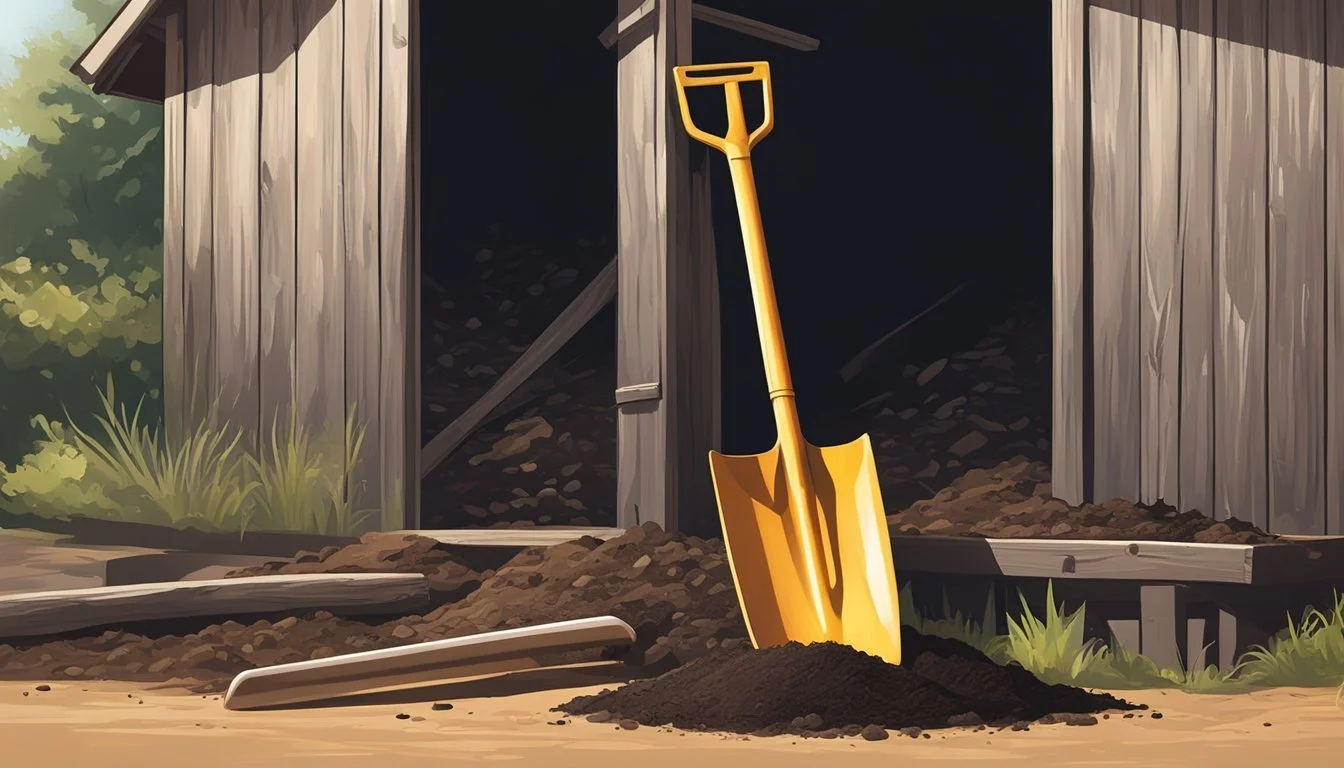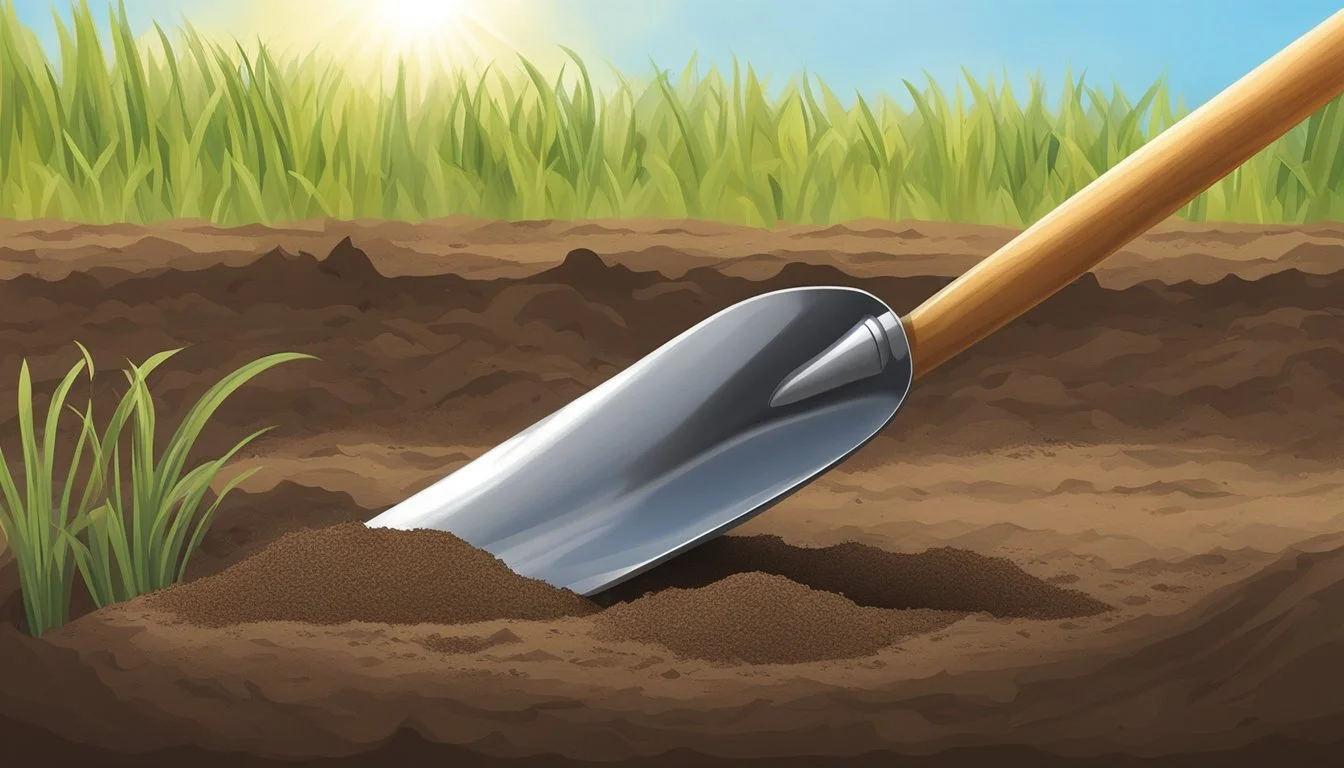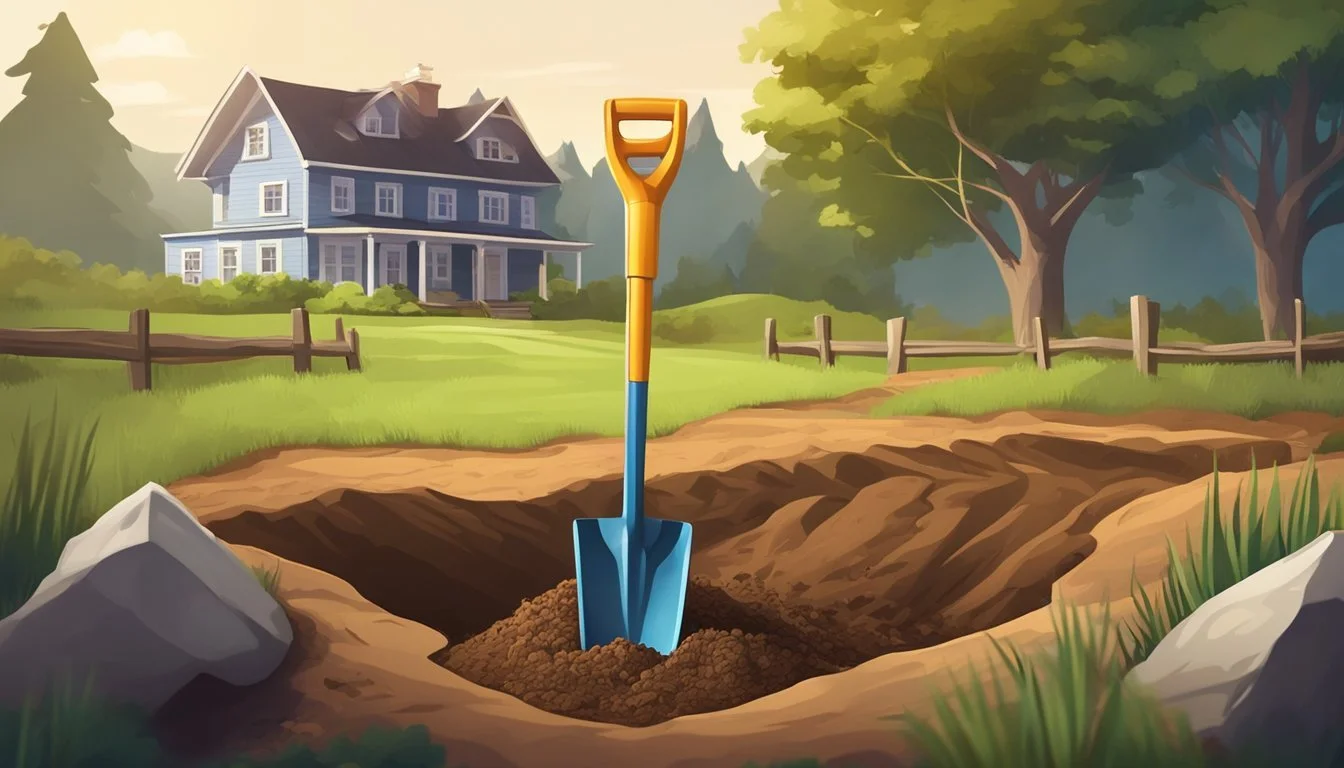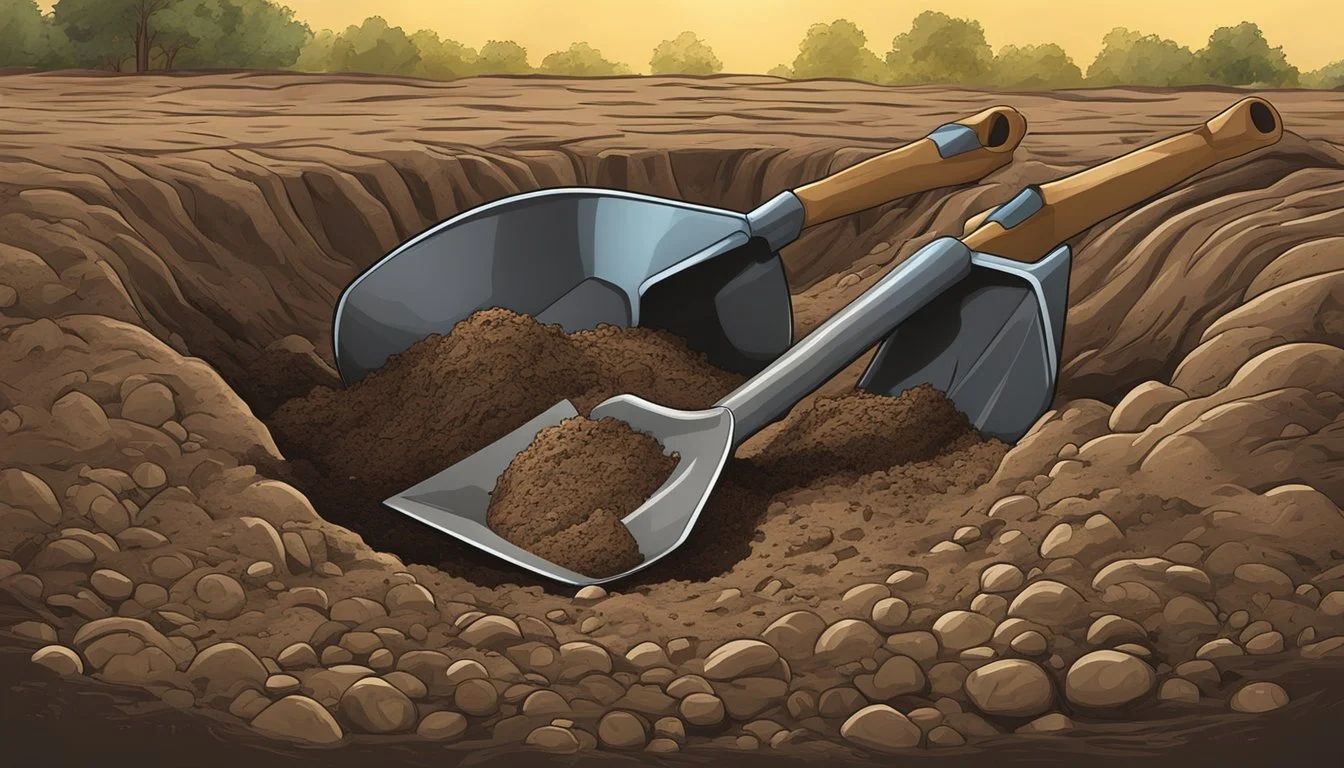Essential Shovels for Homesteading
Your Guide to Simplified Digging and Earth Moving
Shovels are a cornerstone among the essential tools for homesteaders, serving a range of functions from breaking new ground for a garden to moving materials like compost or gravel. The design of a shovel—with its broad blade fixed to a medium-length handle—makes it an ideal tool for lifting and moving soil, sand, and other bulk materials. Different types of shovels, such as those with a flat or pointed tip, offer versatility for various tasks, whether it's digging planting holes or transferring loose materials.
Choosing the right shovel can mean the difference between laborious digging and a task that's accomplished with efficiency. A good shovel should have a sturdy handle and a durable blade, capable of withstanding the rigors of homestead work. Its material plays a significant role in both functionality and longevity; for instance, stainless steel blades resist rust and wooden handles offer a classic feel with strength. When selecting shovels, homesteaders should consider the specific needs of their projects to find the tool that best matches the task at hand.
The effectiveness of a shovel is not just in its design but also in the technique with which it is used. Proper use reduces strain on the body and increases the tool's utility, making tasks like turning over a new garden bed or digging a drainage trench less daunting. As such, a high-quality shovel tailored to the needs of the homestead is an investment that pays dividends in both time saved and work accomplished.
Understanding Shovel Types for Homesteading
For those involved in homesteading, selecting the right shovel for the job is critical. This section explores the various types of shovels suited for different tasks such as digging, transferring, trenching, and gardening on a homestead.
Digging Shovels
Digging shovels are quintessential for tasks ranging from garden bed preparation to construction. These shovels typically feature a pointed tip designed to penetrate soil with ease. Blade materials vary, with hardened steel being common for its durability. The shape of the blade, often pointed and slightly curved, allows for efficient soil penetration and removal.
Scoops and Transfer Shovels
Scoops and transfer shovels are indispensable for moving bulk materials—mulch, soil, sand. Scoop shovels are characterized by a broad, flat, or slightly curved blade, making them ideal for scooping and transferring lightweight materials. Durability comes from materials like plastic for lightweight scoops or metal for heavy-duty use.
Trenching and Edging Tools
Homestead landscaping often requires the creation of trenches or neat edges. A trenching shovel is narrow and sharp, allowing for precise digging of trenches for irrigation or electrical lines. Edging shovels and spades, on the other hand, are flat and straight, perfect for sculpting clean lines around garden beds or walkways.
Specialty Shovels and Accessories
The homestead may occasionally call for shovels that serve specific purposes. Specialty shovels such as tree-planting shovels or those with a serrated edge can be invaluable. Accessories like sharpeners keep blades effective, and ergonomic handles can reduce strain during lengthy tasks.
Selecting High-Quality Materials for Durability
Selecting high-quality materials for a shovel is essential to ensure durability, efficient use of leverage, and comfort during prolonged gardening or construction activities. Attention to the shovel's handle and blade material, along with the incorporation of additional features, can significantly impact its long-term performance.
Wooden vs. Fiberglass Handles
Wooden Handles:
Pros: They offer a classic look and a natural feel. Wood is generally good at absorbing shock.
Cons: More susceptible to environmental wear, may rot or crack over time, requiring more maintenance.
Fiberglass Handles:
Pros: Provide excellent durability and resistance to weathering. They're lighter in weight compared to wood and typically do not require as much maintenance.
Cons: May be more costly than wooden handles, and for some, lack the classic aesthetic.
Stainless Steel vs. Other Blade Materials
Stainless Steel Blades:
Pros: Highly resistant to rust and corrosion; maintains sharpness over time, thus requiring less maintenance.
Cons: Can be heavier, which might add to fatigue during extensive use.
Other Blade Materials:
Alternative materials such as carbon steel can be durable, but they typically need regular maintenance to prevent rust.
Additional Features for Efficiency
Weight: Lighter shovels reduce fatigue, making them more efficient for long-term use.
Leverage: Look for design features that maximize leverage without increasing the weight.
Comfort: A comfortable grip on the handle can prevent blisters and reduce hand fatigue.
Appropriate Shovel Sizes and Lengths
Choosing the right shovel for a homesteading project involves considering the size and length of the tool. It ensures the user can work comfortably and lever soil effectively.
Matching Shovel Length to User Height
Shovel length is crucial for maintaining a comfortable posture while digging. A shovel that matches the user's height allows for efficient use of force, reducing strain on one's back. A general rule is that the top of the shovel handle should reach the user's armpit when standing upright. Below is a guide to match shovel lengths with user heights:
Under 5'4": Opt for shovels around 40 inches in length.
5'4" to 5'11": Shovels between 48 to 50 inches are typically suitable.
Over 6'0": Consider shovels that are over 50 inches in length.
Compact and Full-Sized Options
For homesteaders, having both compact and full-sized shovels can address a variety of tasks. Compact shovels are excellent for small projects, tight spaces, or for use in raised beds and can be easily stored without occupying much space. They generally measure between 18 to 24 inches. Full-sized shovels come into play for larger projects, offering a greater lever force and typically ranging from 48 to 60 inches in length. When choosing a full-sized shovel, it's also important to consider the weight; a heavier shovel could provide more momentum, but it also requires more strength to use.
It's essential for homesteaders to select a shovel that not only matches their height for comfort but also fits the project at hand, balancing the need for leverage, the ease of storage, and the shovel's weight. A spade, for instance, is distinct from a shovel with its pointed, flat blade designed for slicing into the ground, and comes in various lengths as well.
Maintaining Your Shovel for Longevity
To ensure a shovel's durability and functionality, routine maintenance is essential. This involves regular cleaning and sharpening as well as proper storage practices.
Regular Cleaning and Sharpening
Regular, thorough cleaning is vital. After each use, one should remove dirt and debris from the shovel's blade and handle. For wooden handles, this preserves the integrity of the wood, while fiberglass handles benefit from a wipe-down to prevent material degradation. The blade should be rinsed with water and wiped dry to prevent rust.
Sharpening the blade is equally important. One should periodically sharpen the blade's edge to maintain its cutting capability, which makes the shovel more effective and reduces physical strain during use.
Steps for Cleaning and Sharpening:
Rinse the blade with water to remove soil.
Wipe the handle clean, paying attention to the material.
Dry the shovel completely.
Sharpen the blade using a metal file or sharpening stone.
Proper Storage Solutions
The longevity of a shovel is also influenced by how it is stored. A shovel should be kept in a dry and protected location such as a shed or garage. The environment should be free from moisture and direct sunlight which can degrade both the blade and the handle over time.
Effective Storage Practices:
Hang the shovel off the ground to prevent moisture contact.
Keep the storage area clean to protect the shovel from environmental elements.
By adhering to these maintenance and storage procedures, one can significantly extend the life of their shovel and maintain its readiness for any homesteading task.
Leveraging Tools for Specific Projects
Choosing the right shovel can optimize efficiency for various homesteading projects, from garden preparation to heavy lifting tasks.
Gardening and Planting
For garden and planting initiatives, a rounded or pointed-tip digging shovel is indispensable. They facilitate the turning of soil, making the planting of seeds and transplanting of small shrubs and vegetables seamless. Garden tools such as a trench shovel can also be invaluable for creating irrigation channels or planting rows.
Landscaping and Construction Work
Landscaping and construction projects often call for a square-edged spade. This shovel type assists in carving precise edges around garden beds or pathways and is robust enough to slice through sod or hardened soil. When dealing with sand or gravel for pathways, a transfer shovel with its broad and flat design is best suited for efficient movement of these materials.
Handling Heavy and Bulky Materials
For projects involving hefty or cumbersome materials such as logs, rocks, or wet manure, a shovel with a scoop design made from sturdy materials is vital. The scoop allows for easier lifting and fewer physical strains, making it ideal for farm settings where daily chores require material handling.
Seasonal and Weather-Related Tasks
Shovels tailored to the season can greatly enhance productivity. In autumn, a lightweight shovel is perfect for gathering and moving leaves or spreading compost. During winter, a broad and sturdy snow shovel is critical for clearing snow from pathways to maintain safe and accessible homestead grounds.
Homesteading Tool Safety and Best Practices
When it comes to homesteading, safety is paramount, especially when using tools such as shovels for digging and moving earth. Ensuring the proper use of personal protective equipment and techniques for safe lifting and digging can prevent injuries and ensure the longevity of a project.
Personal Protective Equipment
One must prioritize the use of appropriate Personal Protective Equipment (PPE). This includes:
Safety Shoes: Shoes should have a protective toe cap to shield against any falling objects and provide traction to prevent slips.
Clothing: Durable clothing that covers the skin can prevent cuts and scrapes. High-visibility colors are recommended for areas near machinery or vehicular traffic.
Safe Lifting and Digging Techniques
Lifting: They should always use their legs, not their back, to lift heavy loads. A straight spine and bent knees are crucial when picking up any weight.
Proper Use of a Shovel: To effectively utilize a shovel as a lever, they must keep the load close to their body, reducing strain on their muscles. When digging, they should step on the blade's edge to drive it into the ground, using body weight to their advantage.
Maximizing Efficiency with Supporting Tools
Maximizing efficiency on a homestead requires more than just a good shovel. The right supporting tools can make digging and moving earth not just effective, but also less strenuous.
Assisting Equipment like Wheelbarrows and Carts
A homesteader will find that a wheelbarrow is indispensable for moving soil, compost, or harvests across the land. Selecting a lightweight yet durable wheelbarrow enhances maneuverability and reduces physical strain. For larger projects, a garden cart can handle more substantial loads like logs or heavy equipment, keeping the workflow steady and efficient.
Wheelbarrow: Ideal for small to medium loads; easier to navigate through narrow paths.
Garden Cart: Best suited for heavy or bulky items; stable and can carry larger volumes.
Complementary Hand Tools for Detail Work
In addition to the broad strokes made by shovels, hand tools are essential for detail work in the garden and around the homestead. A trowel comes in handy for planting and transplanting tasks, while a rake is perfect for smoothing out soil and gathering debris.
Trowel: For precise digging work; ensures proper planting depth.
Rake: Essential for leveling ground and clearing leaves or rocks.
By integrating these tools with your main shovel, the workload becomes more manageable and homestead tasks are completed with greater precision and less effort.
Innovations and Emerging Technologies
Advancements in shovel technology focus on increasing efficiency and reducing physical strain through improved design and use of new materials. These innovations address both enhanced tool functionality and user comfort.
Tech Advancements in Homesteading Tools
Materials: Modern shovels often incorporate lightweight, durable materials such as fiberglass and high-grade aluminum, reducing the weight of tools and easing the burden on the user during extended use.
Maintenance: Innovations in anti-corrosion coatings and weather-resistant materials extend the lifespan of shovels, requiring less frequent replacements and maintenance.
Efficiency: Cutting-edge designs include sharper, more resilient edges for easier soil penetration and tools specifically shaped for a variety of tasks, improving overall digging efficiency.
Ergonomic Designs for Enhanced Comfort
Handle Design: Manufacturers have introduced ergonomic handles, curved to match the natural movement of a user's hands and arms, thus minimizing stress and the potential for injury.
Comfort: Padded or rubberized grips offer additional comfort and improved grip for homesteaders, reducing hand fatigue and blistering during prolonged digging and earth moving.
Balance: Proper weight distribution is a key focus, with shovels being designed to ensure that they are not only lightweight but also balanced to make the labor-intensive tasks less strenuous.
Conclusion
Shovels are indispensable for anyone maintaining a homestead, farm, or garden bed. They serve multiple functions, from breaking new ground to transporting compost. The strength of a shovel lies in its versatility, and selecting the right one can greatly increase efficiency and ease of work.
Choosing a shovel should be based on the specific needs of the land and the tasks at hand. For instance, a round point shovel is ideal for digging holes for planting, while a flat shovel is better suited for edging garden beds or scooping materials.
Below is a quick reference guide:
Round Point Shovel: Ideal for digging, turning earth.
Square Point Shovel: Best for moving loose materials.
Garden Spade: Perfect for shaping garden beds, edging, and dividing shrubs.
Trenching Shovel: Designed for digging narrow trenches.
One must not forget that maintaining these essential tools is just as crucial as their selection. Proper care, including cleaning and sharpening the blade, can extend a shovel's life and maintain its effectiveness. Storage in a dry, protected environment prevents rust and decay.
A homesteader benefits greatly from knowledge and careful selection of tools. With the right shovels and properly maintained equipment, the tasks of digging and moving earth are carried out with confidence and ease.

